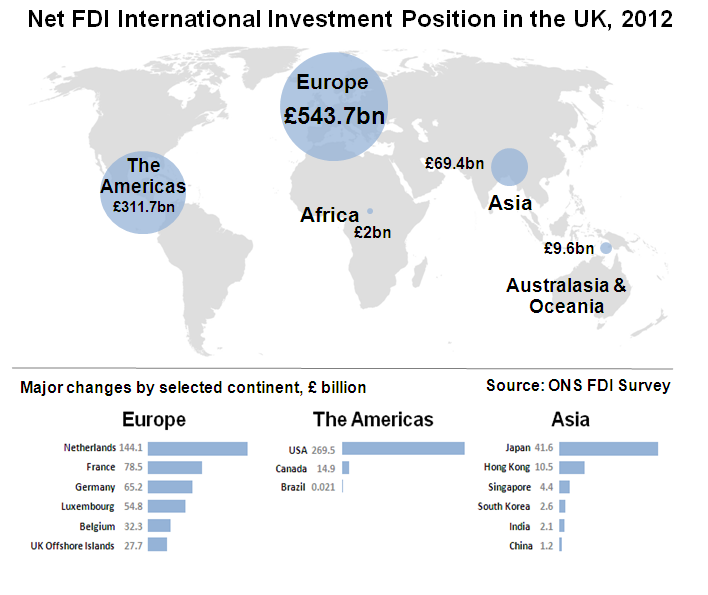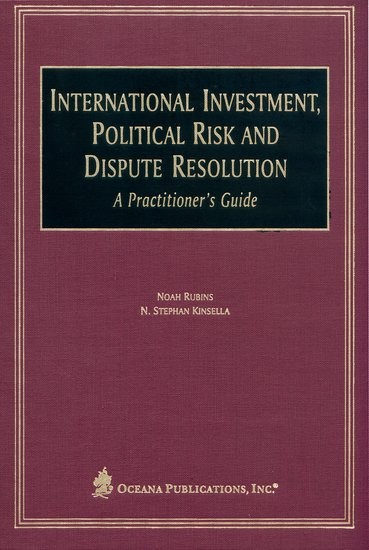Primer On International Investing Part I
Post on: 5 Май, 2015 No Comment

I am a small individual investor interested in dividend growth stocks and foreign equities. Most of my current holdings are U.S. companies but over the last couple of years, I have diversified into foreign stocks as well. I want to share some of the lessons that I learned about investing in foreign equities that trade on the U.S. stock market. Even though the article is targeted primarily at an investor who resides in the U.S. I am hoping that Seeking Alpha’s large international audience may find something of interest as well.
Reasons to look outside the U.S.
- Diversification: It is important for most investors to diversify their portfolio holdings, which helps provide downside protection as well as enhance returns. Diversification comes in many flavors, e.g. by sector (tech/manufacturing/retail/utilities), by market cap (small/mid/large), by type of instrument (stock/bond/gold/real estate) and by geography (U.S./Europe/Emerging Countries). Of course, diversification is a double-edged sword and too much can bring down potential total return. The notion of too little or too much is obviously different for each individual investor. However, in general diversifying abroad helps, especially when the U.S. market underperforms compared with the foreign market.
- Growth: Investing in the stock market is largely based upon the notion of growth. The U.S. is a significant portion of the world economy and will continue to be so for the coming decade. However, the U.S. economy is not growing at a faster rate than emerging markets. The U.S. share of the world economic growth will continue to decline so it is important for young investors to invest abroad and participate in the wealth being created outside the U.S. I must note that it may be possible to invest in some excellent U.S. companies that are proxies for international growth, like Caterpillar (NYSE:CAT ) and Coca-Cola (NYSE:KO ). But sometimes it is just better to invest abroad directly rather than use a U.S.-based proxy.
- Currency Risk: There is a real risk about the U.S. Dollar getting weaker against major international currencies. The recent Quantitative Easing by the Federal Reserve in the U.S. has stoked fears of inflation that may lead to a weak Dollar against other currencies in the coming few decades.
- Strong Companies: Some of the strongest companies in the world are international companies. For example, BHP Billiton (NYSE:BBL )(NYSE:BHP ), an Anglo-Australian firm, is the largest mining company in the world and one that benefited from the global commodity boom in the last decade. It has experienced great growth in the recent past; there is no U.S. company that operates at a similar scale.
- Dividend Culture: I have observed that typically foreign companies pay more dividends than U.S. companies. There appears to be more of a dividend culture abroad than in the U.S. Traditionally, American companies retained earnings, perhaps for investment in future growth or for share buybacks, Though in the last decade this has changed and more U.S. companies have started paying decent dividends, e.g. Apple (NASDAQ:AAPL ) and Broadcom (NASDAQ:BRCM ).

Personally, I just treat the world as one giant stock market and want to find the best companies to invest in — ones that will share their growing profits by increasing their dividends every year.
Extra vigilance required
Investing always comes with inherent risks that typically increase when investing abroad. I’ll discuss a few of the risks that are inherent to foreign stocks. I must remind the reader the following list of risks is over and above the risks associated with investing in any stock. Every investor needs to be extra cautious when investing outside one’s country of residence.
- Currency Exchange Rate: The biggest risk of investing in a foreign stock is associated with the exchange rate between the foreign currency and the U.S. Dollar. Consider a simple scenario — an investor buys stock of a eurozone company on the U.S. stock exchange. Suppose the price on that day was 10 on the European market and $14 on the U.S. market. Further suppose that the stock price does not change on the home stock market for the next year and remains stuck at 10. However, the stock price on the U.S. stock market could still go up or down based on the Euro-U.S. Dollar currency exchange rate. If the Euro became stronger compared to the U.S. Dollar and the rate becomes $1.60 per Euro, then the same stock would trade approximately at $16, but if the Euro becomes weaker and the exchange rate is $1.3 per Euro then the price on U.S. stock market would decline to approximately $13. Obviously, in the real world the stock price is determined by many factors and this is an overly simplistic example. An investor needs to be careful, especially when investing in a country that has an inflationary environment with a currency that tends to get devalued against the U.S. Dollar. For example, Brazilian stocks like CPFL Energia (NYSE:CPL ) were affected over the last year as the Brazilian Real depreciated approximately 20% against the U.S. Dollar.
- Lack of Information: An investor needs to monitor his/her holdings and keep track of a company’s operations as well as any developments in the country that can affect the company’s financial performance. It is often difficult for a U.S.-resident investor to get timely information for foreign companies. The U.S. media (websites, newspapers, magazines, bloggers etc.) may not cover the foreign companies as well as they cover U.S. companies. The foreign company may not file the same level of detailed reports with the SEC as most of the U.S. companies are required to. Language may be an additional hurdle. Sometimes it is just a matter of mind share. For example, U.S. investors would have heard about retailers like Wal-Mart (NYSE:WMT ), Target (NYSE:TGT ), Kroger (NYSE:KR ), Safeway (NYSE:SWY ) etc. However, they may not have heard of Tesco Plc (OTCPK:TSCDY ), Carrefour (OTCPK:CRRFY ) or Ahold (OTCQX:AHONY ) — all multi-national retailing giants from Europe that have great dividend yields.
- Corporate Governance: Some of the foreign countries do not regulate their stock markets as stringently as the U.S. and the levels of corporate governance are especially weak in emerging economies. This is perhaps due to lax regulatory requirements as well as poor investor/media awareness and vigilance. I tend to stay away from countries where risk of corruption and fraud is high (in my humble opinion). For example, I do not hold any investments in Russia, China and India.
- Political Risks: Not all countries are democratic and/or market friendly. There are significant political risks associated with investing in emerging or third-world economies. For examples, the Arab Spring affected the companies with significant operations in Egypt and Libya. Or recently Argentina has decided to nationalize the assets of YPF SA (NYSE:YPF ), an oil and gas giant. Personally, I counter the political risk by investing only in stable democracies of Europe, S. Korea, Taiwan, Japan, Singapore and Brazil.
- Low Liquidity: Some of the foreign stocks listed on the U.S. stock markets have very low trading volumes. As a result the spread between bid and ask prices may be large. This may not affect a patient investor who uses limit orders, but could be devastating to someone who wants to enter or exit a stock quickly. I typically use limit orders and try to invest in fairly liquid international stocks like Nestle (OTCPK:NSRGY ), Total (NYSE:TOT ) and Vodafone (NASDAQ:VOD ).
- Withholding Taxes on Dividends: The foreign country may withhold taxes on dividends paid by the company. This can reduce the effective yield of the stock, especially if the stock is held in a tax advantaged account like Traditional IRA or Roth IRA. For regular taxable accounts this is not a huge deal because the investor can get dollar-for-dollar credit for foreign taxes paid, at the time of filing income tax returns. Typically, $300 for an individual investor ($600 for married filing jointly) can be claimed on Internal Revenue Service Form 1040 without additional forms. For larger amounts, Form 1116 may need to be filed and there could be certain limitations for those receiving large amount of foreign dividends.
- Limited or no DRIP: Most foreign stocks listed on the U.S. exchanges do not provide Dividend Reinvestment plans, which a lot of dividend yield and dividend growth investors prefer for the magical compounding effect. Some companies do offer DRIPs. In fact for some companies there is no dividend withholding tax if the investor elects to receive new shares instead of cash dividends.
- ADR Termination: There is always a risk that the company may terminate its U.S. ADR program and delist the shares. This is not entirely imaginary and companies have voluntarily suspended their ADR program in the past, e.g. Vivendi SA [EPA:VIV]. In some cases, the Depository Receipt Bank steps in and continues an unsponsored ADR program, as in the case of Vivendi, which got an unsponsored ADR from Deutsche Bank under a new ticker of OTCPK:VIVHY. However, I believe that the risk of complete termination is small and similar to that of a U.S. company being taken private.
Concluding Remarks
Investing in foreign stocks may not suit all investors since it comes with its own sets of issues. However, there is always a risk-reward question when investing in any instrument. Once an investor decides to look at foreign stocks there are additional logistics to keep in mind. I discuss some of these aspects in Part 2 of my primer on international investing.
Disclosure: I am long CPL. BRCM. VOD. TOT. BBL. and about 15 more foreign stocks. I will continue to buy more foreign stocks as and when I have funds available.
Continue to Part II >>














